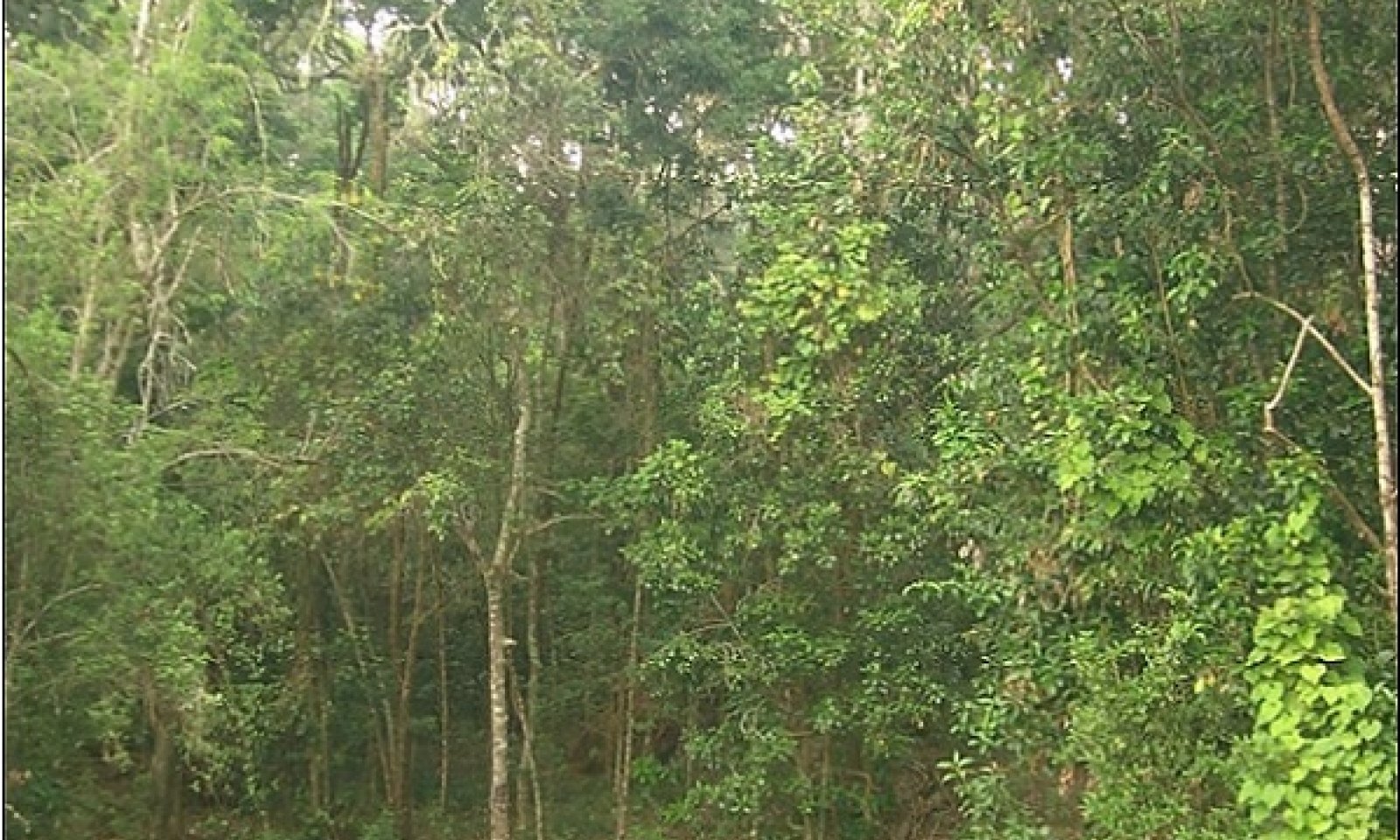
Deep Volcanic Ash Kipuka Forest
List model
Scenario model
Current ecosystem state
Select a state
Management practices/drivers
Select a transition or restoration pathway
- Transition T1A More details
- Transition T1B More details
- Restoration pathway R2A More details
- Transition T2A More details
- Transition T2B More details
- Restoration pathway R3A More details
- Transition T3A More details
- Restoration pathway R4A More details
- Transition T4A More details
- Restoration pathway R5A More details
- Transition T5A More details
- Restoration pathway R6A More details
-
No transition or restoration pathway between the selected states has been described
Target ecosystem state
Select a state
Description
The Reference State consists of one plant community. Most or all current examples of this state had been disturbed by domestic animals foraging on introduced grasses in the forest understory until a change in management policy within Volcanoes National Park during the second quarter of the 20th century.
This ecological site contains some native species, including the codominant tree wingleaf soapberry (Sapindus saponaria), that are extremely rare or nonexistent in other ecological sites on the Island of Hawaii. However, many of these species are found on Puuwaawaa cone in F161BY503 Ustic Isomesic Forest on the opposite side of the island.
Submodel
State 2
Naturalized Grassland State with >25% Large Native Tree Cover State
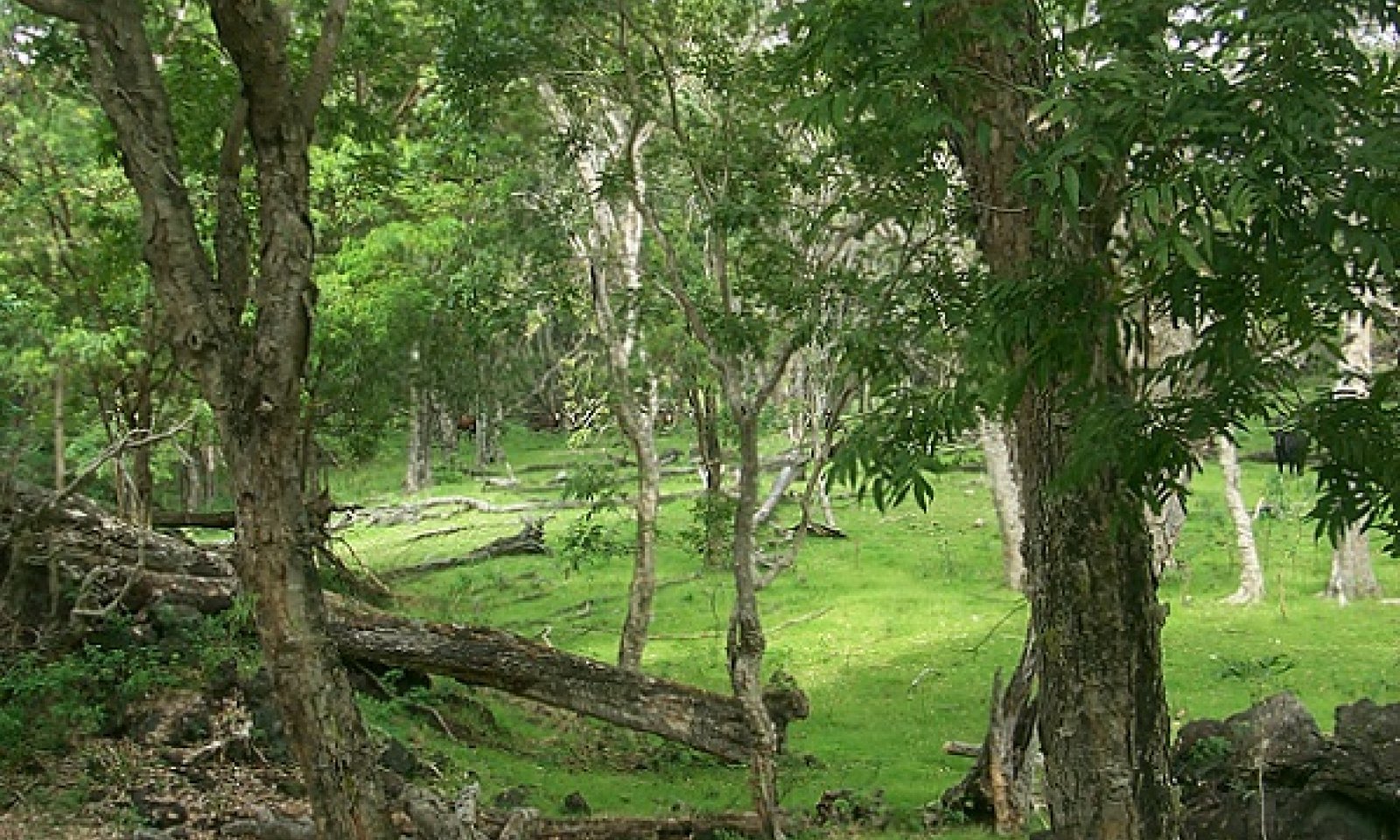



Description
This state is comprised of two community phases that have an open canopy of remnant native overstory tree species. Kikuyugrass (Pennisetum clandestinum) is the dominant grass, sometimes with pangolagrass (Digitaria eriantha). The shade produced by the tree canopy is sufficient to allow significant cover of cool-season (C3) meadow ricegrass or weeping grass (Microlaena stipoides) to grow. Trees in these pastures provide shade and protection from the elements to livestock.
Very little regeneration of native trees is possible due to competition from grasses and damage by foraging livestock, leading to a transition to State 3, Naturalized Grassland with <25% Large Native Tree Cover, as mature trees die out. Continuous grazing that does not allow favored forage species time to recover from defoliation results in a change to Phase 2.2, which is dominated by lower value forage species but contains enough remnant kikuyugrass to allow for a shift back to Phase 2.1 with prescribed grazing. Longer-term continuous grazing leads to State 4, Invaded Understory.
Submodel
State 3
Naturalized Grassland State with <25% Large Native Tree Cover State




Description
This state is comprised of two community phases in which native overstory tree canopy cover ranges from 0 to about 25%. Kikuyugrass (Pennisetum clandestinum) is the dominant grass, sometimes with pangolagrass (Digitaria eriantha). The shade produced by the tree canopy is insufficient to allow significant cover of cool-season (C3) meadow ricegrass or weeping grass (Microlaena stipoides) to grow.
Continuous grazing that does not allow favored forage species time to recover from defoliation results in a change to phase 3.2, which is dominated by lower value forage species but contains enough remnant kikuyugrass to allow for a shift back to phase 3.1 with prescribed grazing. Longer-term continuous grazing leads to State 5, Invaded Naturalized Grassland.
Submodel
Description
This state consists of one community phase. It arises by invasion by introduced species of intact native forest (the Reference State) or of native overstory stands from which the original understory has been cleared. Native species are unable to regenerate in the highly competitive understory of introduced plants and eventually die out. With time, introduced tree species will emerge to replace the native overstory trees. When this last step has occurred, the site will have transitioned to State 5, Invaded Overstory and Understory State.
Disturbance of the soil and direct damage to native understory plants by introduced ungulates, particularly pigs and cattle, will speed the transition to this state by killing native plants and creating germination sites for introduced species.
Restoration to the Reference State or a facsimile of it is possible by fencing the site, removing all ungulates, applying herbicides, and replanting native species when needed. Intensity of restoration efforts will be dependent on the degree of invasion by introduced species and by the particular species that have invaded the site. Long term weed management and fence maintenance will be necessary.
Submodel
Description
This state consists of one community phase. It is a weedy grassland dominated by grass species with little or no forage value interspersed with shrubs and tree saplings. Tall stands of Colombian beardgrass and broomsedge bluestem present a high risk of wildfire. Desirable forage grasses such as kikuyugrass and pangolagrass may still be present in small amounts, but are no longer capable of regaining dominance of the site with prescribed grazing. Native aalii and pukiawe shrubs are able to grow up through the grass stands. Seedlings and saplings of invasive, introduced trees such as faya tree, silk oak (Grevillea robusta), and common guava become increasingly tall and abundant with time unless destroyed by wildfire.
Improving the grazing regime is unlikely to shift this phase to a more productive grassland phase due to the abundance of invasive plants. Frequent mowing will keep shrub and tree heights in check and, if timed before seedset and combined with lime application, reduce the abundance of Colombian beardgrass and broomsedge. Herbicide treatments are needed to reduce weed abundance. Resprigging of kikuyugrass or reseeding of pangolagrass may be needed, along with removal of livestock until desirable forages have reassumed dominance.
Submodel
Description
This state is comprised of one plant community dominated by introduced species in both the overstory and understory. Understory vegetation usually is very sparse to nonexistent. Remnant individuals of a few native species may persist. This state might be considered a dead end as far as further succession or transition to another state.
Restoration to a facsimile of the Reference State could probably be done by intensive removal of invasive plant species followed by long term weed management and reintroduction of native plant species.
Submodel
Transition T1A


Mechanism
State 1, Reference State, can transition to State 2, Naturalized Grassland with >25% Large Native Tree Cover, by clearing the forest with heavy machinery or by gradual clearing by allowing cattle access to the forest. Cattle eventually eat or destroy understory ferns, forbs, shrubs, and saplings, opening up the forest so that introduced forage grasses will thrive. Grasslands that were cleared by machinery may have broad cleared areas and isolated islands of trees that later grew in the shelter of slash piles. Cleared areas are planted with desired forage grass species.
Transition T1B

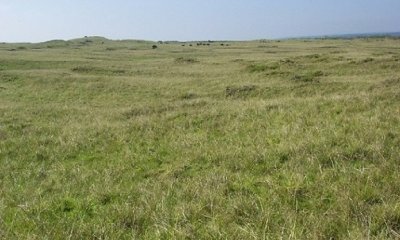
Mechanism
State 1, Reference State, can transition to State 2, Naturalized Grassland with <25% Large Native Tree Cover, by clearing the forest with heavy machinery and burning the slash. Cleared areas are planted with desired forage grass species.
Restoration pathway R2A


Mechanism
It is possible to restore a Reference State forest, as has been done in Hawaii Volcanoes National Park. Feral and domestic ungulates must be excluded by fences and remaining feral ungulates removed from the restoration site. Well managed domestic ungulates are useful to manage vegetation outside the restoration site or in areas awaiting restoration practices. Long term weed control must be applied to introduced pasture species and the many opportunistic plant species that invade the site after ungulates are removed. Extensive planting of native species would follow. Increased shade from trees growing on the site causes a shift from C4 (warm season) grass dominance (typically kikuyugrass) to shade tolerant C3 (cool season) grasses (primarily meadow ricegrass). This meadow ricegrass layer can be dense and detrimental to establishment of native plants. Attempts have been made to suppress meadow ricegrass by planting native shrubs and tree ferns that create dense shade and produce litter that covers the grass. Some spontaneous regeneration of native plants may occur from the existing seed bank in the soil and seeds from overstory trees.
Transition T2A


Mechanism
The mature native trees in State 2 may be destroyed by fire carried by underutilized forage or by weedy grasses such as broomsedge bluestem and Colombian beardgrass. Browsing and trampling by ungulates precludes most native tree reproduction, leading to gradually reduction in tree cover. These processes will cause a transition to State 3, Naturalized Grassland with <25% Native Tree Cover.
Transition T2B


Mechanism
Long term continuous grazing or abandonment leads to gradual invasion of State 2 by dense stands of introduced vines, grasses, and forbs as well as weedy trees such as common guava and strawberry guava, causing a transition to State 4, Invaded Understory.
Restoration pathway R3A


Mechanism
It is possible to restore a Reference State forest, as has been done in Hawaii Volcanoes National Park. Feral and domestic ungulates must be excluded by fences and remaining feral ungulates removed from the restoration site. Well managed domestic ungulates are useful to manage vegetation outside the restoration site or in areas awaiting restoration practices. Long term weed control must be applied to introduced forage species and the many opportunistic plant species that invade the site after ungulates are removed. Extensive planting of native species would follow. Increased shade from trees growing on the site causes a shift from C4 (warm season) grass dominance (typically kikuyugrass) to shade tolerant C3 (cool season) grasses (primarily meadow ricegrass). This meadow ricegrass layer can be dense and detrimental to establishment of native plants. Attempts have been made to suppress meadow ricegrass by planting native shrubs and tree ferns that create dense shade and produce litter that covers the grass. Some spontaneous regeneration of native plants may occur from the existing seed bank in the soil and seeds from overstory trees, if any are present.
Transition T3A

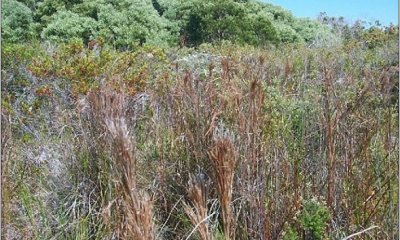
Mechanism
Abandonment of grassland without accompanying weed control results in invasion of the site by blackberries, weedy grasses, and weedy forbs that had previously been suppressed by managed grazing, browsing, and trampling by animals. Alternatively, long term continuous grazing makes grassland susceptible to heavy invasion by introduced weed species. The result if a transition to State 5, Invaded Naturalized Grassland.
Restoration pathway R4A


Mechanism
State 4 Invaded Understory State may be converted to State 2 Naturalized Grassland with >25% Native Trees by mechanical clearing or herbicide treatment of understory plants. Native overstory trees may be harvested for timber, destroyed, left to provide shade, or protected if the intention is eventual restoration to State 1 Reference State. If leaving large native trees in place, care must be taken to not damage near-surface roots within about 20 feet of the trees. Introduced forage grasses may then be seeded or sprigged into the site. Herbicide applications will be necessary before and during forage establishment to control emerging weed species.
Mechanism
The large native trees that form the overstory of State 4 Invaded Understory are unable to successfully regenerate due to the competitive understory of introduced species. Eventually the large native trees die and are replaced by introduced tree species.
Restoration pathway R5A


Mechanism
Invaded Naturalized Grassland can be restored to State 3 Naturalized Grassland with <25% Large Native Tree Cover by removal of heavy shrub and sapling growth by brush control, herbicidal control of present and reemerging nonwoody invasive species followed by temporary removal of livestock, planting desirable forage species, and later adoption of prescribed grazing practices to maintain the restored grassland in the desired condition.
Transition T5A

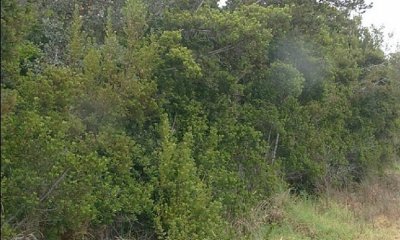
Mechanism
Invaded Naturalized Grassland transitions to State 6 Invaded Overstory and Understory in the absence of fire, with abandonment, or in the absence of measures to prevent the growth of a dense canopy of introduced tree species that shades out most understory vegetation.
Model keys
Briefcase
Add ecological sites and Major Land Resource Areas to your briefcase by clicking on the briefcase (![]() ) icon wherever it occurs. Drag and drop items to reorder. Cookies are used to store briefcase items between browsing sessions. Because of this, the number of items that can be added to your briefcase is limited, and briefcase items added on one device and browser cannot be accessed from another device or browser. Users who do not wish to place cookies on their devices should not use the briefcase tool. Briefcase cookies serve no other purpose than described here and are deleted whenever browsing history is cleared.
) icon wherever it occurs. Drag and drop items to reorder. Cookies are used to store briefcase items between browsing sessions. Because of this, the number of items that can be added to your briefcase is limited, and briefcase items added on one device and browser cannot be accessed from another device or browser. Users who do not wish to place cookies on their devices should not use the briefcase tool. Briefcase cookies serve no other purpose than described here and are deleted whenever browsing history is cleared.
Ecological sites
Major Land Resource Areas
The Ecosystem Dynamics Interpretive Tool is an information system framework developed by the USDA-ARS Jornada Experimental Range, USDA Natural Resources Conservation Service, and New Mexico State University.


